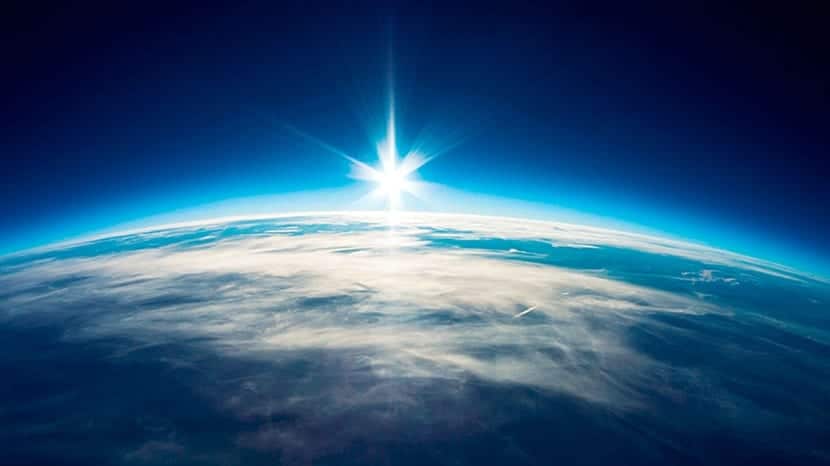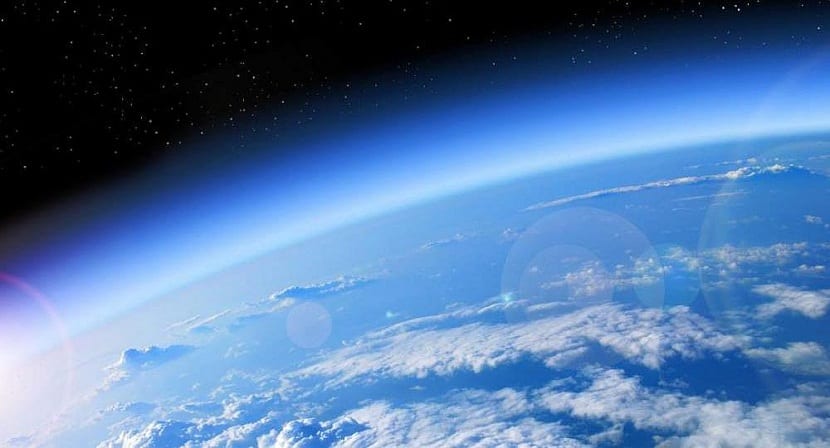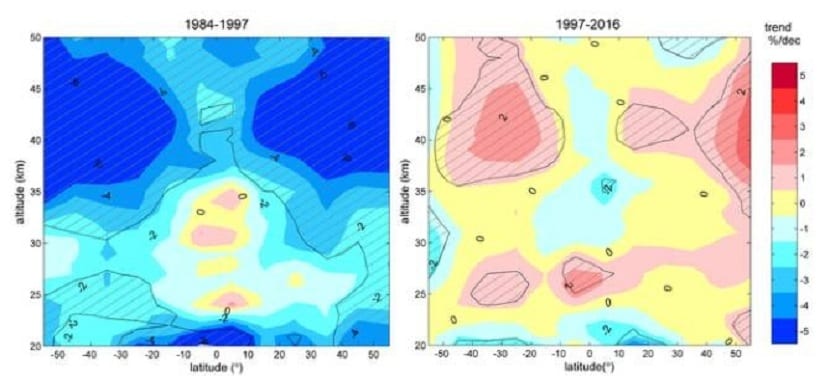
To monitor the state of the hole in the ozone layer, the ozone concentration in the stratosphere has been measured for three decades through a satellite. After this time of measurement, finally signs of a global recovery of the ozone layer have been found, thanks to the efforts made throughout the world to curb the use of substances that destroy it.
How positive are the results you have found about the thickness of the ozone layer?
Role of the ozone layer

The ozone layer is nothing more than an area of the stratosphere where the concentration of this gas is higher. This gas acts as a shield against the sun's harmful ultraviolet rays. Thanks to that, We don't burn our skin just by exposing ourselves to the sun, plants can live and photosynthesize, etc.
For this reason, that the ozone layer is in good condition is essential for life as we know it on the planet to develop. With technological development, large emissions of gases are emitted that destroy the ozone layer, such as chlorofluorocarbons. These gases react with ozone particles in the stratosphere, destroying them. Because of them the famous hole in the ozone layer has been formed.
The hole in the ozone layer is not a hole in itself, because if it is, it would be too dangerous for the planet, since it is located on Antarctica and would allow the rapid melting of the ice of this continent. This "hole" is just a decrease in the concentration of this layer around Antarctica.
When detrimental ozone lets in harmful ultraviolet rays from the sun, exposure to these rays increases, causing us skin cancer, cataracts and immune system disorders. They also affect animals, plants, and even microscopic phytoplankton.
Ozone recovery

Ozone, located in the stratosphere, is located about 11-50 km above the earth's surface began to decrease in the 70s of the last century. The most important reduction since then the ozone layer is between 4 and 8% per decade.
Thanks to international agreements such as the Montreal Protocol, which prevents the use and reduction of substances that destroy the ozone layer, the trend to reduce has been interrupted.
Satellites that are continuously monitoring and monitoring ozone concentration in all areas of the Earth have managed to detect the first signs of recovery. Satellites offer fairly adequate measurements, although their temporal limitation prevents them from making more panoramas of ozone concentration. Climate scientists estimate that satellite ozone readings will span 30 years or more and they are needed to be able to analyze trends in ozone concentrations with greater precision.
Depending on the season of the year in which we are and the solar activity, the ozone concentration is not always stable throughout the year. Therefore, it is important to analyze the trend in concentration over the years and not the specific concentration. For this reason, measures are necessary for decades to corroborate whether human beings are causing the hole in the ozone layer to begin to recover.
To answer this problem, scientists from the ESA Climate Change Initiative They are harmonizing measurements from different satellites to get a long-term view of ozone variability.
“By combining data from the Climate Change Initiative with data from NASA, we clearly see negative trends in upper-atmosphere ozone before 1997 and positive trends after that date. Trends in the upper stratosphere beyond the tropics are statistically significant and herald some ozone recovery, ”he says. Viktoria Sofieva, Senior Research Scientist at the Finnish Meteorological Institute.
Thanks to this, we can know today the trend of the ozone layer.